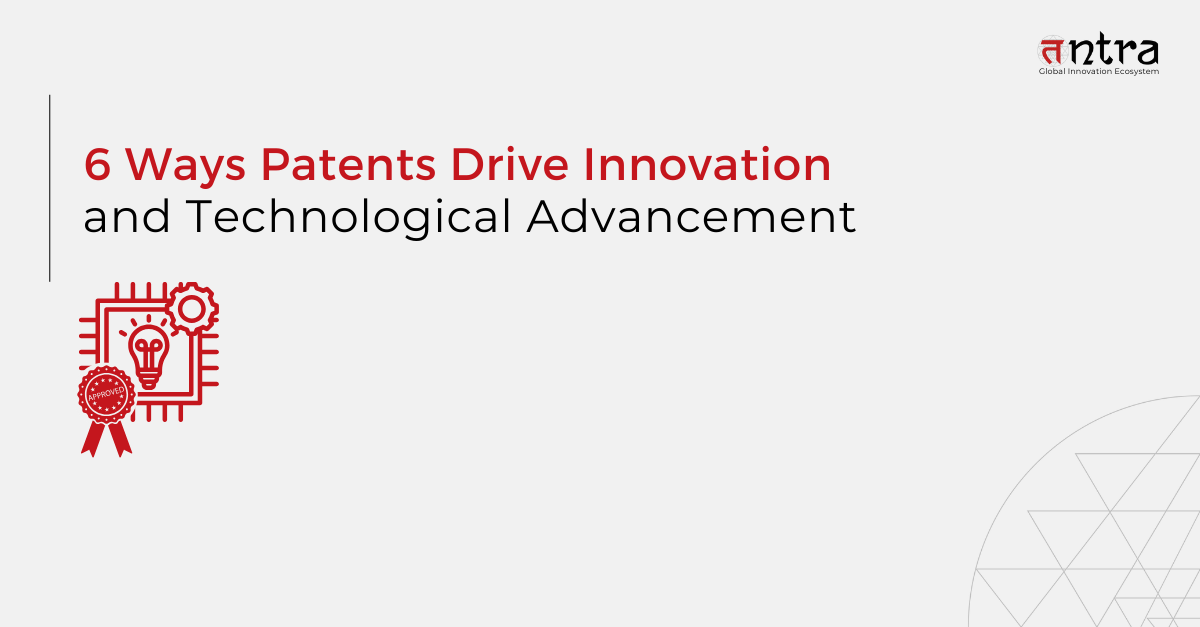
6 Ways Patents Drive Innovation and Technological Advancement
Table of Contents
TogglePatents are like shields that keep innovations from being stolen and advance society. They generate fresh concepts, propel economic expansion, and promote constructive rivalry among businesses. After they expire, patents reveal technological information that pave the way for future developments. They draw investors and serve as a deterrent to theft. Patents are the key to our world’s quick evolution, from the first patent ever to the newest technology. Read this blog to learn more.
Google hopes to distinguish reality from fiction via machine learning.
An AI-based system that identifies “information operations campaigns on social media” was the subject of a patent application filed by the corporation under its IP strategy. Google’s algorithm tracks and predicts whether content in social media posts contains false information using neural network language models.
“Information operations (IO) activity has flourished on social media, partly due to the low cost, low risk, and immediate worldwide reach of IO campaigns, as well as their ability to capitalize on the viral amplification that social media platforms incentivize,” according to Google.
Using social media posts as its training dataset, Google’s algorithm uses transfer learning to train a generic language model that can make predictions. In addition to being labeled with poster information such as “individual, organization, (or) nation state,” the material is classed as either benign or information operations. Additionally, Google stated in the filing that distinct prediction models might be trained for other platforms, mentioning Facebook, LinkedIn, and Twitter (now X in particular.
The technology described in Google’s software patent may be utilized to monitor other social media sites in addition to YouTube, which is owned by Alphabet. According to Green, Google’s top aim is providing high-quality search results, so keeping an eye out for false content on other platforms could help in that endeavor.
(Source: The Daily Upside)
Patents and their Ascent in the Modern World
As one of the busiest patent offices, the United States Patent and Trademark Office (USPTO) received over 682,000 patent applications in 2020. With about 1.5 million patent applications filed, China’s National Intellectual Property Administration (CNIPA) is the largest patent office globally.
Patents pertaining to software intellectual property protection have been rising over time. The class “Data Processing: Software Development, Installation, and Management” alone saw over 45,000 patents granted by the USPTO in 2020.
Applications for patents pertaining to software are numerous and include a wide range of topics, including user interfaces, artificial intelligence, algorithms, and cybersecurity.
How Patents Encourage Technological Advancement
In order to prevent anybody from manufacturing and selling the items without the inventor’s or applicant’s prior consent, patents are a statutory right that are awarded to the inventor or applicant for their invention for a maximum of 20 years from the priority or filing date. We are able to witness technology progressing at the speed of light because of patents.
From the beginning of time, when the first patent was awarded, to the present, when businesses are submitting and getting awarded patents for the newest technologies. Human ingenuity and cognitive ability lead to numerous discoveries and inventions with improvements on current technology and products in the quest for a better society.
Here’s how patents drive innovation and technological development:
- They give rise to new ideas
For a certain time, patents grant inventors the exclusive right to use their inventions. Patents and IP protection encourage innovators to devote time, energy, and financial resources to creating new and improved technologies by giving them a monopoly on their inventions. By encouraging risk-taking and pushing the envelope of what is feasible, the promise of exclusivity promotes innovation and pushes inventors to take calculated risks. - They contribute to economic growth
Economic growth is significantly fueled by intellectual property rights. They make it possible for businesses and inventors to profit from their creations by selling or licensing their patented technology to third parties. This boosts economic activity, encourages investment, and opens up job prospects. Additionally, patents give businesses a competitive edge since they allow them to stand out from the competition and draw in partners or investors. - They lead to healthy internal competition
The company’s most valuable resource is its workforce, and a team can be greatly inspired by the prospect of obtaining a patent when they are actively involved in their job. When striving for a patent application, an appropriate innovation approach can be selected while utilizing KICKBOX and other tools that facilitate collaboration and allow for the recording of important advances. This promotes healthy competition and intrapreneurship. Employees will adopt a mindset that encourages innovation, in part because they desire to impress supervisors and other employees. - They provide technical knowledge
One important source of technical knowledge is intellectual property systems and patents. Inventors reveal all the information about their invention, including its design, manufacturing methods, and usefulness, when they submit a patent application. After the patent expires, this knowledge enters the public domain, enabling others to build upon and benefit from earlier innovations. This information exchange promotes continued innovation across a range of businesses and speeds up technological advancement. - They protect against unauthorized use
Inventors can get legal protection through patents from unapproved use or exploitation of their creations. Owners of patents are entitled to prosecute infringers and enforce their exclusive rights. This safeguard can prevent competitors, counterfeiters, or would-be imitators from utilizing or replicating the patented technology, giving innovators a chance to profit from their creativity. - They support funding objectives
Patents are useful tools that draw in investors and help businesses and innovators raise money. Projects using patented technologies are more likely to receive funding from investors because they provide a degree of assurance and possible returns on investment. Additionally, patents give you leverage when negotiating with possible licensees or partners, which increases the likelihood of fruitful partnerships and commercialization.
Final Thoughts
The potential for innovation and the development of new brands differs depending on the industry a firm operates in. Any business may establish itself as a leader in its sector by leveraging its brand to become a well-known entity that exudes reliability and excellence through IP-led software product engineering services. Patenting novel items or methods will pay off for businesses that spend a lot of money on R&D since it will encourage more innovation and give the business a competitive advantage. Intellectual property rights offer the return on investment and protection required to keep a position of leadership.
If you are looking for a trusted IP-led software product engineering company to supercharge your next innovation, Tntra can help!
Schedule a FREE CONSULTATION CALL today!





